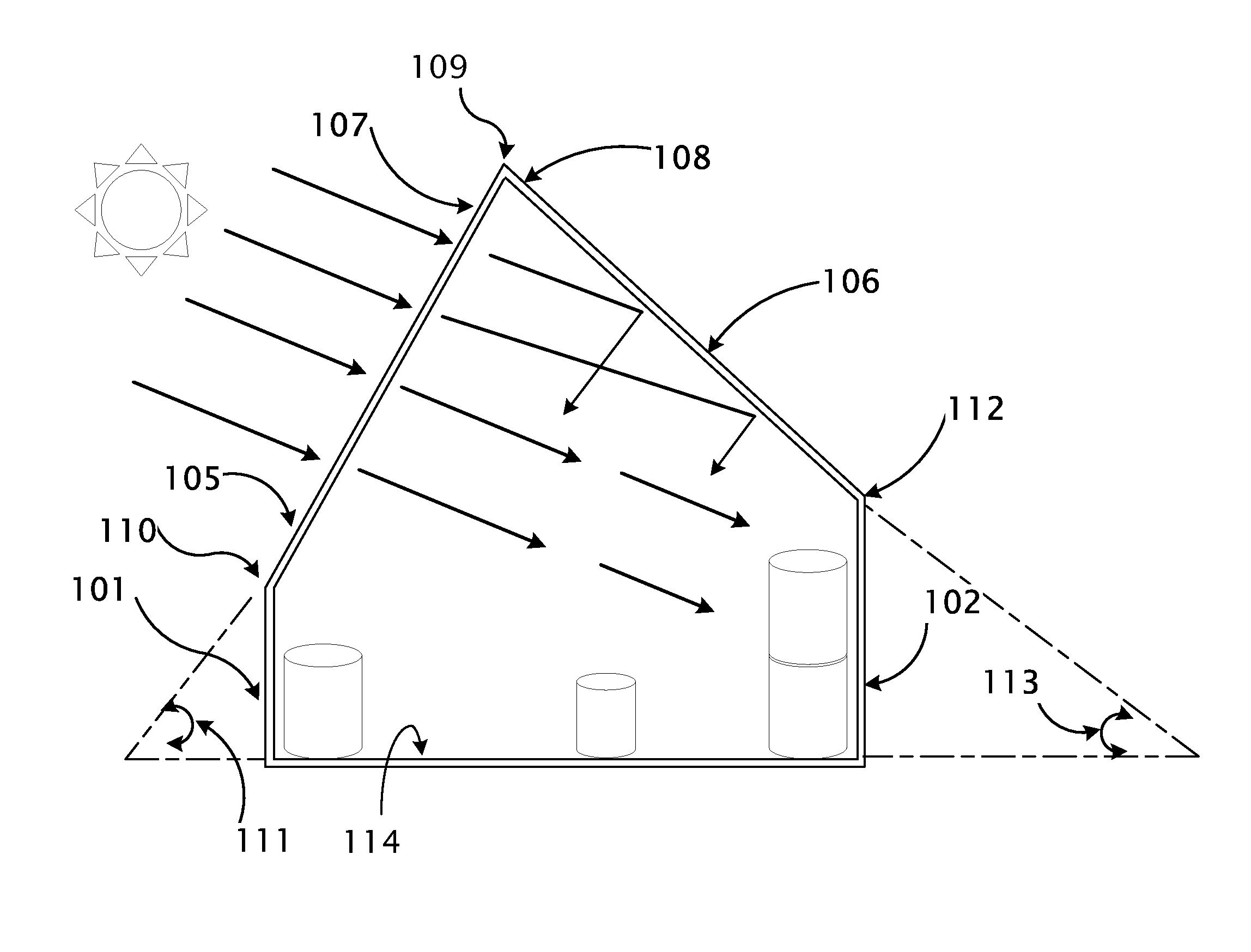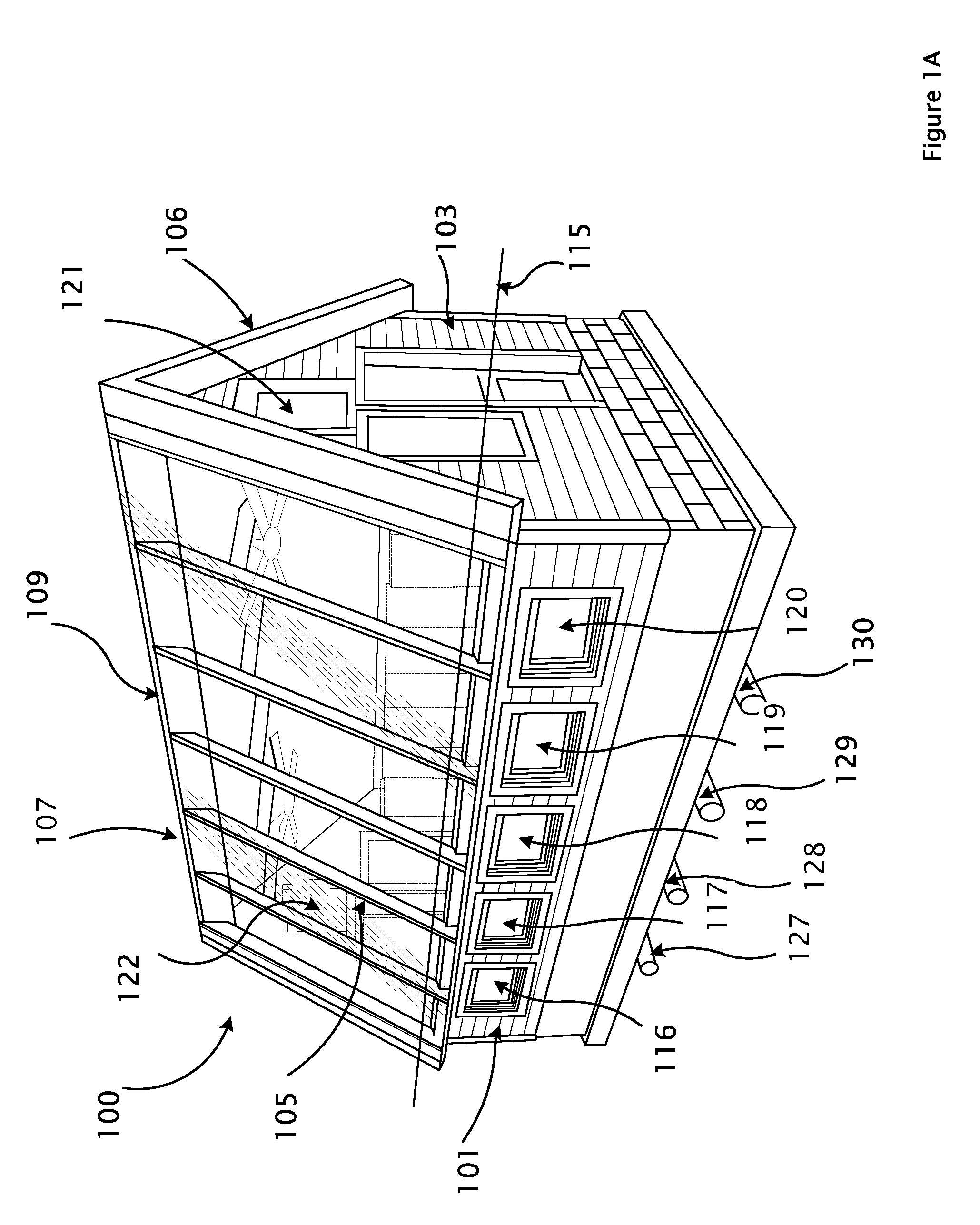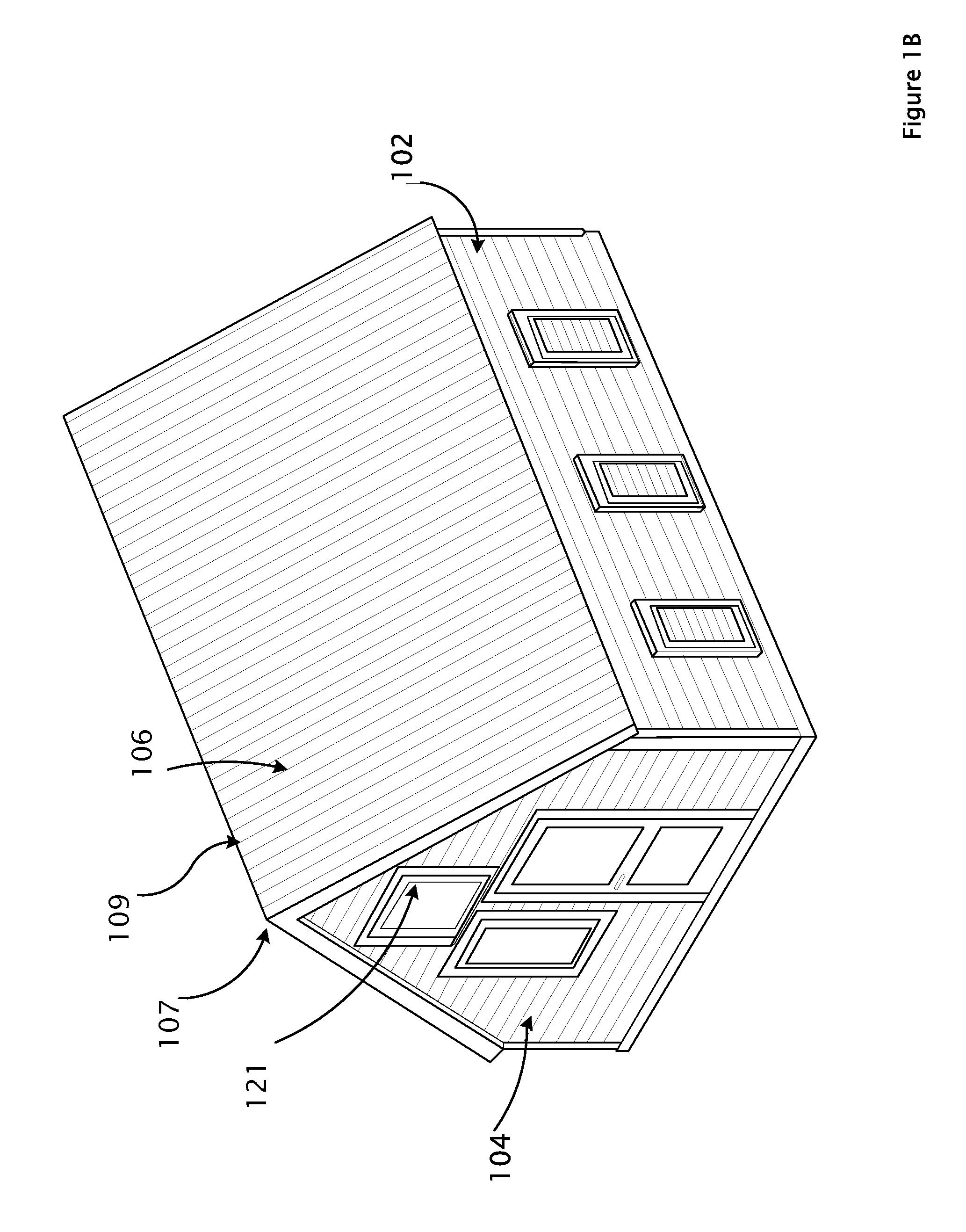Passive solar greenhouse
a solar greenhouse and solar energy technology, applied in the field of solar greenhouses, can solve the problems of requiring supplemental heat sources, fruits and vegetables year-round, and affecting the growth of flowers, herbs, etc., and achieve the effect of maximizing photosynthetic metabolism
- Summary
- Abstract
- Description
- Claims
- Application Information
AI Technical Summary
Benefits of technology
Problems solved by technology
Method used
Image
Examples
example 1
[0074]Triple-glazing was applied on the south facing side of the greenhouse. 35% of the total glazing is in the lower portion and is vertical, and 65% is in the upper portion at 60° angle from horizontal. The angle was determined to be the optimum angle necessary to allow the insolation to enter the structure at local solar noon on December 21 (at a 30° angle from horizontal) for maximum solar gain during the winter months while reflecting much of the solar gain out of the structure in the summer (when the noonday summer sun is at a 77° angle from horizontal). The glazing used was a high-quality polycarbonate glazing with a 71% transmission rate. Interior surfaces were painted a silver color to reflect light onto plants and the thermal mass. The rear angle or pitch of the roof was 30° from the horizontal.
[0075]Thermal mass was used to store daytime excess heat (reducing overheating and the need to vent this excess heat) and make that heat available for...
example 2
[0080]Triple-glazing was applied on the south facing side of the greenhouse. 35% of the total glazing is in the lower portion and is vertical, and 65% is in the upper portion at a 60° angle from horizontal. The angle was determined to be the optimum angle necessary to allow the insolation to enter the structure at local solar noon on December 21 (at a 30° angle from horizontal) tor maximum solar gain during the winter months while reflecting much of the solar gain out of the structure in the summer (when the noonday summer sun is at a 77° angle from horizontal). The glazing used was a high-quality polycarbonate glazing with a 71% transmission rate. Interior surfaces were painted a silver color to reflect light onto plants and the thermal mass. The rear angle or pitch of the roof was 30° from the horizontal.
[0081]Thermal mass was used to store daytime excess heat (reducing overheating and the need to vent this excess heat) and make that heat available f...
example 3
[0089]Triple-glazing was applied on the south facing side of the greenhouse. A larger aperture was used to allow more sunlight into structure; in other words, the solar collecting surface was large compared to the interior floor space of the greenhouse. 0% of the total glazing is in the lower portion and is vertical, and 100% is in the upper portion at a 60° angle from horizontal. The angle was determined to be the optimum angle necessary to allow the insolation to enter the structure at local solar noon on December 21 (at a 30° angle from horizontal) for maximum solar gain during the winter months while reflecting much of the solar gain out of the structure in the summer (when the noonday summer sun is at a 77° angle from horizontal). The glazing used was a high-quality polycarbonate glazing with a 71% transmission rate. Interior surfaces were painted a light silver color to reflect light onto plants and the thermal mass. The rear angle or pitch of the roof was 45° ...
PUM
 Login to View More
Login to View More Abstract
Description
Claims
Application Information
 Login to View More
Login to View More - R&D
- Intellectual Property
- Life Sciences
- Materials
- Tech Scout
- Unparalleled Data Quality
- Higher Quality Content
- 60% Fewer Hallucinations
Browse by: Latest US Patents, China's latest patents, Technical Efficacy Thesaurus, Application Domain, Technology Topic, Popular Technical Reports.
© 2025 PatSnap. All rights reserved.Legal|Privacy policy|Modern Slavery Act Transparency Statement|Sitemap|About US| Contact US: help@patsnap.com



